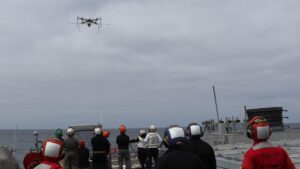
The Navy and Marine Corps Small Tactical UAS program office (PMA-263) held a sea-based Unmanned Aircraft Systems (UAS) wide-area mission demonstration in July to assess potential capabilities to aid the future fleet. The event was organized by PMA-263, Naval Air Warfare Center Aircraft Division (NAWCAD) AIRWorks, and Navy Warfare Development Command (NWDC). It lasted July 11-15 aboard the USS Paul Hamilton (DDG-60) guided-missile destroyer in San Diego. The event allowed Insitu Inc. and L3Harris Technologies [LHX] to exhibit multiple technologies…

 By
By 











